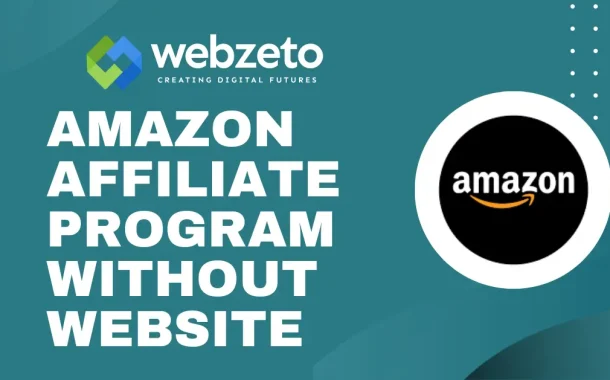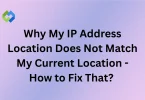You can join the Amazon Affiliate Program even if you don’t have a website. Instead of a website, you can use other platforms like social media, YouTube, or a blog on a free platform. Amazon is mainly interested in knowing how you plan to share your affiliate links and reach potential buyers. As long as you have a platform where you can drive traffic and promote products.
Table of Contents
Table of Contents
Amazon Affiliate Program Requirements
These requirements help ensure that affiliates are well-prepared to promote Amazon products effectively and ethically.
- Platform for Promotion: Amazon requires you to have a platform where you can share your affiliate links. While a personal website is common, Amazon also accepts other platforms like social media accounts (Instagram, Facebook, Twitter), YouTube channels, or blogs hosted on free services like WordPress.com or Blogger. Your platform should have a clear focus or niche that aligns with the products you intend to promote.
- Quality Content: Amazon values content that is informative, engaging, and relevant to the products you are promoting. Your content should provide value to your audience, whether it’s through product reviews, tutorials, or lifestyle tips. High-quality content not only helps in getting approved but also improves your chances of making sales through your affiliate links.
- Compliance with Amazon’s Policies: To maintain the integrity of the program, Amazon has strict guidelines that affiliates must follow. This includes not promoting prohibited products (e.g., adult content, illegal items), avoiding deceptive marketing practices, and ensuring that your promotional activities are in line with Amazon’s operating agreement. It’s crucial to stay updated with these policies, as violating them can lead to termination from the program.
- Accurate Information: When signing up, you need to provide detailed and accurate information about yourself and your promotional platform. This includes your name, address, phone number, and tax information. Additionally, you’ll need to explain how you plan to drive traffic to Amazon using your platform. Providing clear and honest information increases your chances of approval.
- Drive Traffic: Amazon wants to see that you have the potential to drive significant traffic to their site. This means you should have an established audience on your chosen platform, whether it’s a specific number of social media followers, YouTube subscribers, or consistent blog traffic. The more active and engaged your audience, the better your chances of being accepted into the program and succeeding as an affiliate.
Step-by-Step Guide to Signing Up
Create or Log into Your Amazon Account
If you don’t have an Amazon account, start by creating one. Visit Amazon’s homepage, click on “Sign In,” and select “Create Your Amazon Account.” Provide basic details like your name, email, and password. If you already have an account, simply log in.
Access the Amazon Associates Program
Go to the Amazon Associates website (affiliate-program.amazon.com). Click the “Sign Up” button to begin the application process. This page is specifically for those interested in joining Amazon’s Affiliate Program.
Provide Your Platform Details
During the sign-up, Amazon will ask where you plan to share affiliate links. Enter the URLs or names of your platforms, whether it’s a blog, social media account, or YouTube channel. Ensure the platform is active and has content related to the products you plan to promote.
Complete the Account and Profile Information
You’ll need to fill out an application form with your personal information, including your name, address, and phone number. You’ll also create a store ID (a unique identifier for your affiliate account) and describe your platform’s content, target audience, and promotional methods. The more detailed and accurate you are, the better.
Set Up Payment and Tax Details
Choose your preferred payment method: direct deposit, Amazon gift card, or check. You’ll also need to complete the necessary tax information, which is required for Amazon to report your earnings. Make sure everything is filled out correctly to avoid payment delays.
Submit Your Application and Await Approval
Review your entire application for accuracy, then submit it. Amazon will review your details, and you’ll typically receive a decision within 24-48 hours. If approved, you’ll gain access to your Amazon Associates dashboard, where you can start creating affiliate links and tracking your performance.
Approval Process
After you submit your application to the Amazon Affiliate Program, Amazon will review the details you provided. They’ll check your platform, whether it’s a blog, social media account, or YouTube channel, to ensure it meets their standards. Amazon looks for active platforms with quality content that aligns with the products you plan to promote. If everything checks out, you’ll receive an initial approval, giving you access to your Amazon Associates account.
Once you have initial approval, you enter a 180-day evaluation period. During this time, you must make at least three qualifying sales through your affiliate links. These sales prove that you can effectively drive traffic to Amazon and generate revenue. This step is crucial because it shows Amazon that your promotional methods are working.
After making three sales, Amazon will conduct a final review of your account. They’ll assess the quality of your traffic, your promotion methods, and whether you’re following their policies. If everything is in order, your account will receive full approval, allowing you to continue using the Amazon Associates program without restrictions.
Effective Affiliate Marketing Without a Website
1. Social Media Platforms
Social media is a powerful tool for affiliate marketing. You can use platforms like Instagram, Facebook, TikTok, and Twitter to share engaging content related to products you want to promote. Create posts, stories, or reels showcasing products, sharing reviews, or providing tips. Use your bio or post descriptions to include affiliate links. The visual nature of these platforms makes them ideal for capturing attention and driving traffic.
2. YouTube Channel
YouTube is an excellent platform for creating video content. Start a channel focused on your niche and produce videos like product reviews, tutorials, unboxings, or comparisons. Include affiliate links in the video description and mention them during the video. Engaging video content can attract viewers and encourage them to click on your links, especially if your recommendations are genuine and well-presented.
3. Blogging on Free Platforms
If you enjoy writing, consider starting a blog on free platforms such as WordPress.com, Blogger, or Medium. Write informative articles, how-to guides, or product reviews that are relevant to your niche. Embed your affiliate links within your posts. While free blogs may have some limitations, they can still effectively reach an audience and generate traffic.
4. Email Marketing
Building an email list is another effective alternative. Offer a freebie, like an eBook or a helpful guide, to encourage sign-ups. Use your email newsletters to share product recommendations and include affiliate links. Personalize your emails to create a connection with your audience, providing them with valuable content alongside your promotions.
5. Online Communities and Forums
Engage in online communities, forums, or niche-specific groups on platforms like Reddit, Facebook, or specialized forums. Participate in discussions, answer questions, and provide value to the community. When relevant, share your affiliate links, but do so sparingly and ensure it fits naturally within the conversation to avoid coming off as spammy.
6. Podcasting
If you enjoy speaking, consider starting a podcast. Share insights, interviews, or discussions related to your niche. Mention products during episodes and provide your audience with affiliate links in the show notes or accompanying materials. Podcasts have a dedicated listener base that trusts the host, making them an effective channel for driving affiliate sales.
Common Challenges and How to Overcome Them
Building Trust Without a Website
- Challenge: Without a website, it can be harder to establish credibility and trust with your audience. People often prefer visiting a website for more detailed information.
- Solution: Focus on building a strong personal brand on your chosen platform. Share authentic content, engage with your audience, and provide valuable insights. Use testimonials or success stories to showcase your expertise. Consistently posting high-quality content will help build your reputation over time.
Driving Traffic to Affiliate Links
- Challenge: Attracting traffic to your affiliate links can be difficult without a centralized website.
- Solution: Use multiple platforms to expand your reach. Share your content across different social media channels, collaborate with influencers, or participate in relevant online communities. Leverage SEO techniques on platforms like YouTube and blogs to improve visibility and reach a larger audience.
Limited Control Over Content and Branding
- Challenge: Using third-party platforms means you have limited control over your content and branding.
- Solution: Customize your profiles and pages as much as possible to reflect your brand identity. Use consistent branding elements like logos, color schemes, and messaging across all platforms. This helps create a cohesive experience for your audience, making it easier for them to recognize and trust your content.
Compliance with Platform Policies
- Challenge: Each platform has its own rules regarding affiliate links, which can change frequently and lead to account suspensions if not followed.
- Solution: Familiarize yourself with the specific policies of each platform you use. Regularly review their guidelines to ensure compliance. If you’re unsure about something, reach out to their support for clarification. Staying informed helps you avoid potential issues.
Competition and Market Saturation
- Challenge: The affiliate marketing space is competitive, making it hard to stand out.
- Solution: Identify a niche where you can provide unique insights or perspectives. Focus on creating high-quality, original content that addresses specific needs or problems in that niche. Engage with your audience personally to build loyalty and differentiate yourself from competitors.
FAQs
Q. Do I need a niche to join the Amazon Affiliate Program?
While having a niche helps, it’s not mandatory. You can promote products in various categories. However, focusing on a specific niche can make it easier to attract a targeted audience.
Q. Can I use Amazon affiliate links on social media?
Yes, you can share Amazon affiliate links on social media platforms. Just ensure you follow the platform’s rules regarding affiliate marketing and disclose that the links are affiliate links.
Q. Is there a fee to join the Amazon Affiliate Program?
No, joining the Amazon Affiliate Program is free. You don’t need to pay any fees to sign up or participate.
Q. How long does it take to get paid as an Amazon affiliate?
Amazon pays affiliates approximately 60 days after a qualifying sale. This waiting period allows for returns and cancellations to be processed.
Q. Can I join the Amazon Affiliate Program if I’m outside the U.S.?
Yes, Amazon has affiliate programs in various countries. If you’re outside the U.S., check if there’s a local Amazon Associates program you can join.
Conclusion
The Amazon Affiliate Program offers great opportunities for anyone looking to earn money through affiliate marketing, even without a website. By leveraging platforms like social media, YouTube, and email marketing, you can effectively promote products and drive traffic to Amazon. Understanding the requirements and using the right strategies can lead to success in the program.
Remember, building trust with your audience is key. Focus on providing valuable content and engaging with your followers. Overcome challenges by using multiple platforms and staying informed about policies. With dedication and creativity, you can succeed in the Amazon Affiliate Program, whether you have a website or not.














